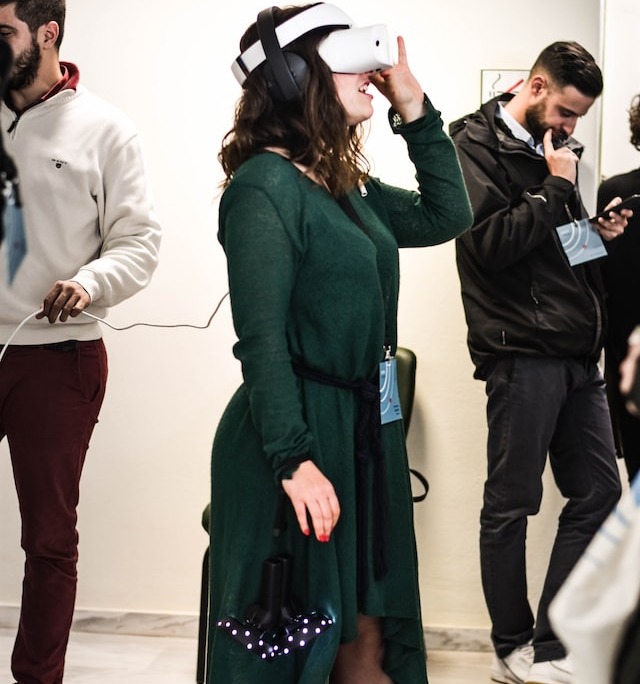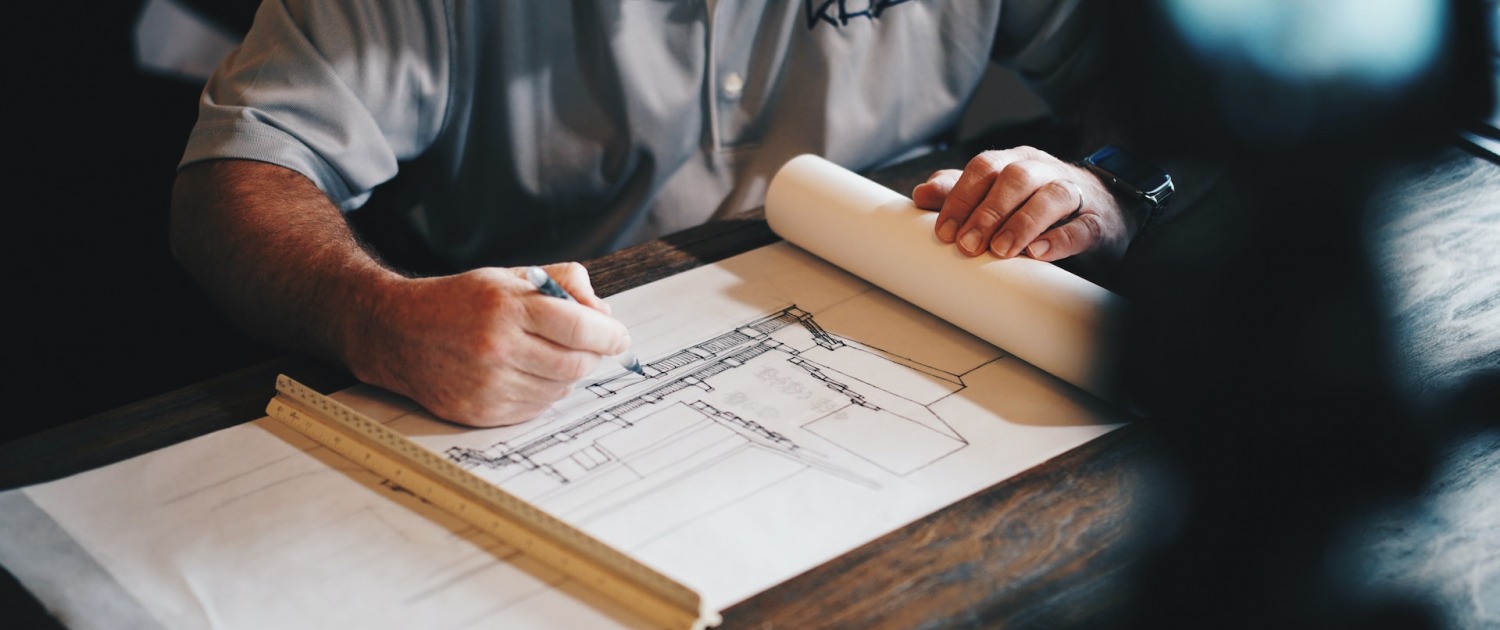Virtual Reality (VR) technology provides a new way to interact with architecture. Architects and designers can now prototype, explore, and build new designs in an immersive virtual world. This digital platform has revolutionized the way that architects create their projects as it allows them to visualize, test, and experience their designs in real-time before they’re built.
Introduction: What is Virtual Reality and How Can it be Used in Architecture?
Virtual reality (VR) is created using computer technology. When you use VR goggles or a headset, you are actually seeing computer-generated images. These images are generated by a process called rendering.
Rendering creates the images by calculating the position of objects in a 3D space and then drawing them on a 2D screen. This process is repeated many times per second to create the illusion of movement.
A person using virtual reality equipment is typically able to “look around” the artificial world, move about in it, and interact with virtual features or items. The effect is commonly created by VR headsets consisting of a head-mounted display with one or two small high-resolution OLED or LCD monitors providing separate images for each eye, stereoscopic headphones delivering sound to each ear, and head motion tracking sensors.
In architecture, VR provides several advantages. It enables users to take a virtual walkthrough of 3D models of buildings from any angle or perspective. Additionally, this technology allows for instant visualization of multiple perspectives so that the user can easily get an idea of how the finished design will look. With VR, architects are able to test their designs in a variety of conditions and environments, giving them the ability to make better design decisions while saving time and money.
Advantages of Virtual Reality for Architects

Virtual Reality offers several advantages for both experienced and novice architectural designers alike. First, it allows users to take a virtual walkthrough of 3D models of buildings from any angle or perspective without leaving the comfort of their own home. This means architects can show clients their proposed design concepts quickly, allowing for faster decision making on changes or modifications.
Second, VR technology allows for instant visualization of multiple perspectives so that the user can easily get an idea of how the finished design will look. This eliminates the need to wait and see what a physical model of the building would turn out to be. Additionally, this technology enables architects to test their designs in a variety of conditions and environments, giving them the ability to make better design decisions while saving time and money.
Finally, Virtual Reality has opened up new possibilities when it comes to architecture. With this technology, architects are able to create structures that were previously impossible due to physical limitations, such as curved walls and suspended bridges. By utilizing VR technology, designers can explore these ideas within a virtual world before committing resources to a physical model.
Latest Trends in VR Architecture
The use of Virtual Reality in architecture is growing rapidly as more and more professionals are beginning to recognize the potential offered by this technology. Several trends have emerged within the industry over the last few years. One such trend is the use of 3D printing for rapid prototyping during the design phase. This allows architects to quickly test different iterations of their designs without having to commit resources to creating a physical model. Additionally, architects are increasingly utilizing augmented reality to overlay digital information onto physical environments. This can be used to quickly visualize various elements of a design such as furniture placement or color schemes.
Another trend that is becoming popular within the architecture community is the use of 360-degree video technology. This allows designers to capture virtual tours of their completed projects and share these with potential clients from anywhere in the world. Finally, many architects are now taking advantage of voxel-based rendering which enables them to manipulate large amounts of data for immersive visualizations and simulations.
Overall, Virtual Reality technology has revolutionized the way architects work and design buildings. The latest trends in VR architecture give professionals the ability to rapidly prototype ideas, create immersive visualizations, and share their work with clients from anywhere in the world. With these tools, architects can quickly create innovative designs while ensuring they remain on budget and on schedule.
Challenges When Using VR for Architecture
Although Virtual Reality technology offers many advantages to architects, it also presents several challenges. One of the biggest issues is the cost of the technology and hardware required to run the applications. This can be a serious barrier for smaller firms or individual designers with limited budgets. Additionally, there are still some gaps in terms of immersion due to latency and resolution issues that arise when processing large amounts of data.
Another challenge is creating realistic visuals. VR applications must often simulate natural light conditions, shadows, reflections, and other environmental factors which can be difficult to accurately recreate in a virtual environment. Finally, user input is another challenge as it can be difficult for users to interact with 3D objects using controllers or motion tracking devices.
How to Get Started With VR Architecture
Getting started with VR architecture can seem daunting, but there are a few simple steps that can help make the process easier. First and foremost, research is key. It’s important to understand what type of project you want to create and what hardware and software will be needed in order to achieve these goals. Once you have an idea of the scope of your project, it’s time to find a reliable VR development team or agency that has experience with VR architecture projects.
Next, decide on which VR platform best suits your needs and budget. There are many different platforms available such as Unity, Unreal Engine, Vizard and others – each one offers their own unique set of features and capabilities so it’s important to do your research and choose the one that’s right for you. Finally, you’ll need to create a realistic timeline with achievable milestones in order to stay on track and make sure your VR architecture project is successful.
Virtual reality architecture can revolutionize the way architects design buildings but it requires careful planning and execution in order to be successful. With the right tools and expertise, VR architecture can help take projects from concept to completion faster than ever before while creating unique visualizations that bring designs to life. By following these steps, designers can get started on their first VR architecture project with ease.
Conclusion
The potential of Virtual Reality technology in architecture is immense, allowing architects to create more realistic designs faster than ever before. It provides an immersive experience that allows designers to create, visualize, and even experience their designs without leaving the comfort of their own home. As this technology continues to evolve, we can expect to see even more advancements being made in the field of architecture and design with the help of virtual reality. Virtual reality is revolutionizing the way that architecture is being designed and developed, creating a more efficient and enjoyable process for both professionals and clients alike.
Join the VR Entertainment Industry in Fort Worth or Irving, Texas
Become part of the latest trend in entertainment by owning a Virtual Reality Arcade franchise in Fort Worth or Irving, Texas. We’re expanding and seeking enthusiastic entrepreneurs to bring this cutting-edge experience to these dynamic cities. Both locations offer the perfect environment for launching a successful VR arcade. Discover more about this exciting opportunity by visiting our Irving and Fort Worth franchise pages today!

